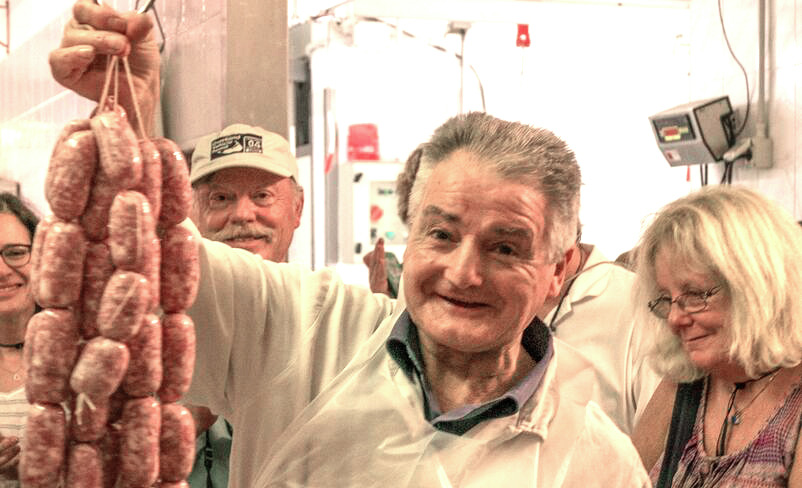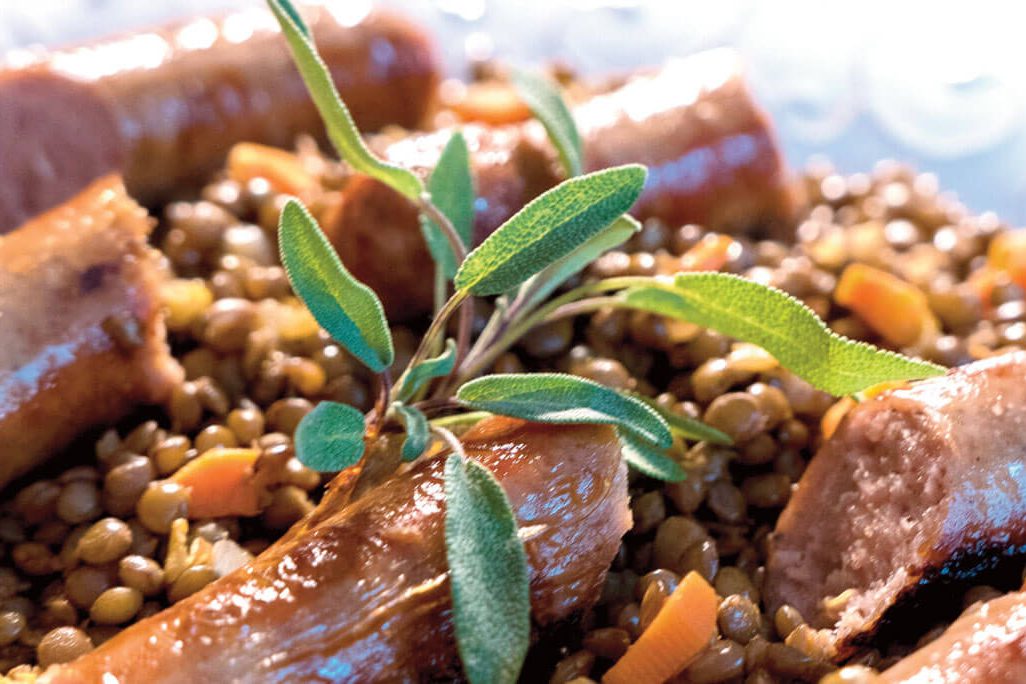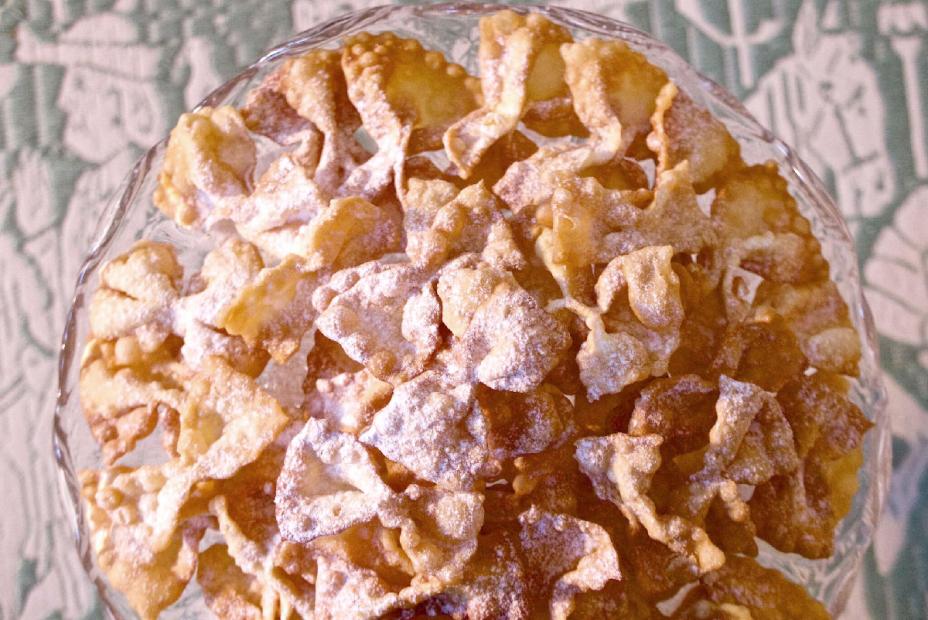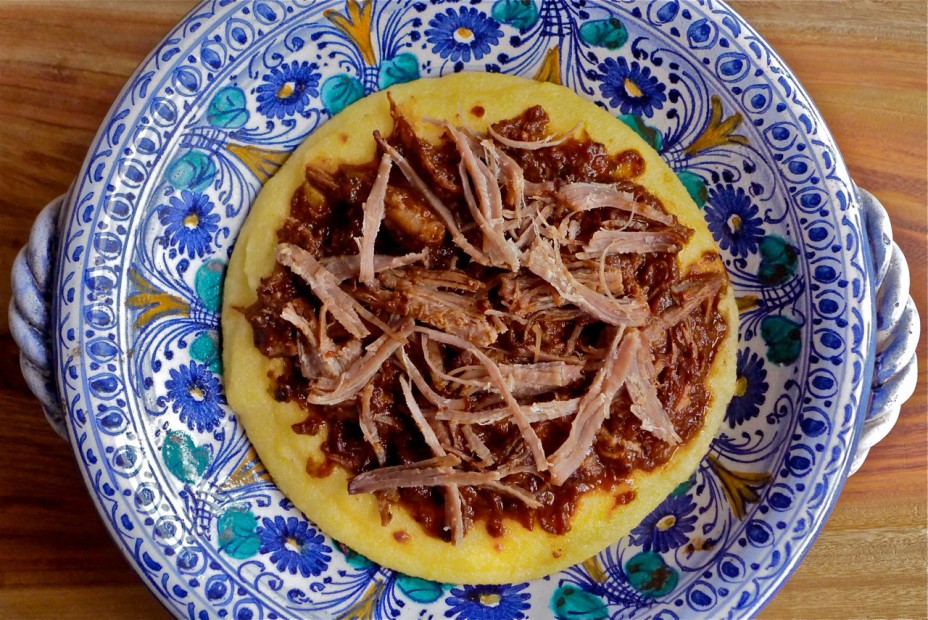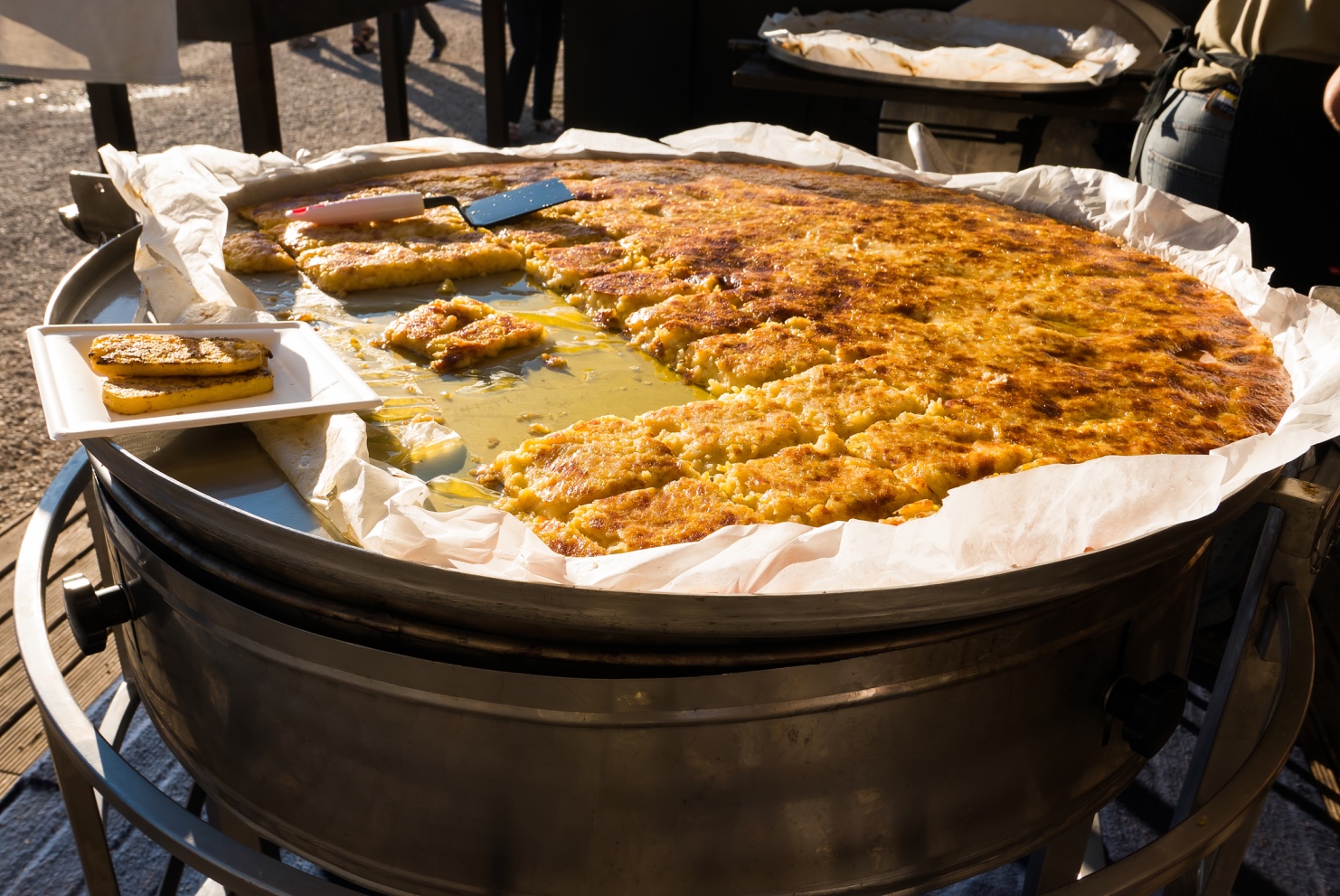Every Italian region has its harvest rituals that make quick and tasty use of the foods of the season. Umbria, lush land of endless vineyards and porky delights, makes salsicce all’uva, pan-roasted sausages and grapes, a dish that joins two of their gastronomical obsessions. Locals conjecture that it originated during the vendemmia, the grape harvest, when the fruit was plentiful and quick and hearty dishes had to be prepared to fuel those laboring in the fields. Variations on the theme reflect the wine traditions of particular wine-producing areas. Where whites are produced, tradition calls for sautéing the sausages with white grapes; in red wine territory, black grapes are used. Wine is sometimes added to the pan—white or red respectively—which fortifies the flavor and gives the dish a beautiful cast and aroma.
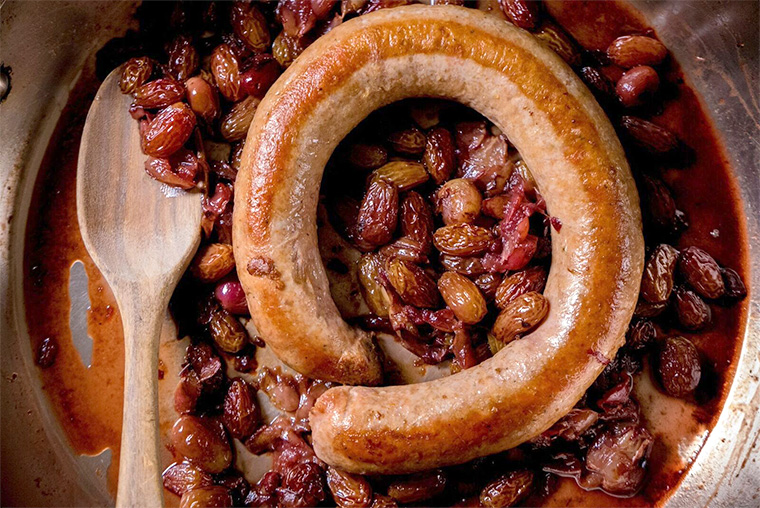
I first tasted the sausage and grape combination at a trattoria in Norcia, where pork butchery has been an art form for some 500 years, so much so that the word norcino has come to mean “pork butcher” throughout Italy. The sausages were plump and succulent, the grapes a dark local variety that matched the meat’s porky richness; the added wine created a delicious liquid that bridged the two. It was a marvel and I’ve been making it ever since with black or white grapes, depending on what I have.
Procuring Good Sausages
The success of such a simple dish will depend entirely on the goodness of the ingredients. It is best to source sausages from butchers who use meat from sustainably and humanely raised pigs that are never given antibiotics or growth hormones. Such meat not only tastes better, it is better for you than pork produced from factory-farmed animals, and takes into account animal welfare. In addition, it is important to know whether any chemicals have been added. Monosodium glutamate, nitrates, or nitrites are routinely used in the sausage-making process. While the meat industry maintains that MSG improves flavor and nitrites preserves the red color of meat, there is incontrovertible proof that they are bad for your health.
The best pork sausages are made using whole muscle, not scraps, and enough fat to make them juicy without being greasy. Sausages sold in the States are often gussied up with all kinds of flavorings, from broccoli to pineapple. Italian butchers do not do this. Umbrian norcini season theirs with judicious amounts of mashed fresh garlic and black pepper and little else.
You will need good quality, straightforward pork sausages, which in America are labeled “sweet pork sausages.” As for the grapes, you can use black, red, or white, as long as you match the wine to the fruit—red wine with black or red grapes; white wine with white grapes. Taste grapes before buying them to ensure they are good and flavorful; best if they, too, are grown without chemicals. In the traditional recipe for salsicce all’uva, the grapes are cooked directly in a cast-iron skillet along with the sausages. Because conventional table grapes can lack character, I’ve gotten into the habit of pre-roasting them separately at a very low temperature to dehydrate them somewhat first; this concentrates their sugars and flavor.
What Wine to Use
Another way to boost the flavor of nondescript grapes is with wine. The “big” flavor in a good wine comes from the grape variety, the climate and soil it grows in, and the yeast that develops in the fermentation process. When it is exposed to gentle heat in the pan, the alcohol evaporates and its unique flavors are concentrated, preserved, and absorbed by the fruit.
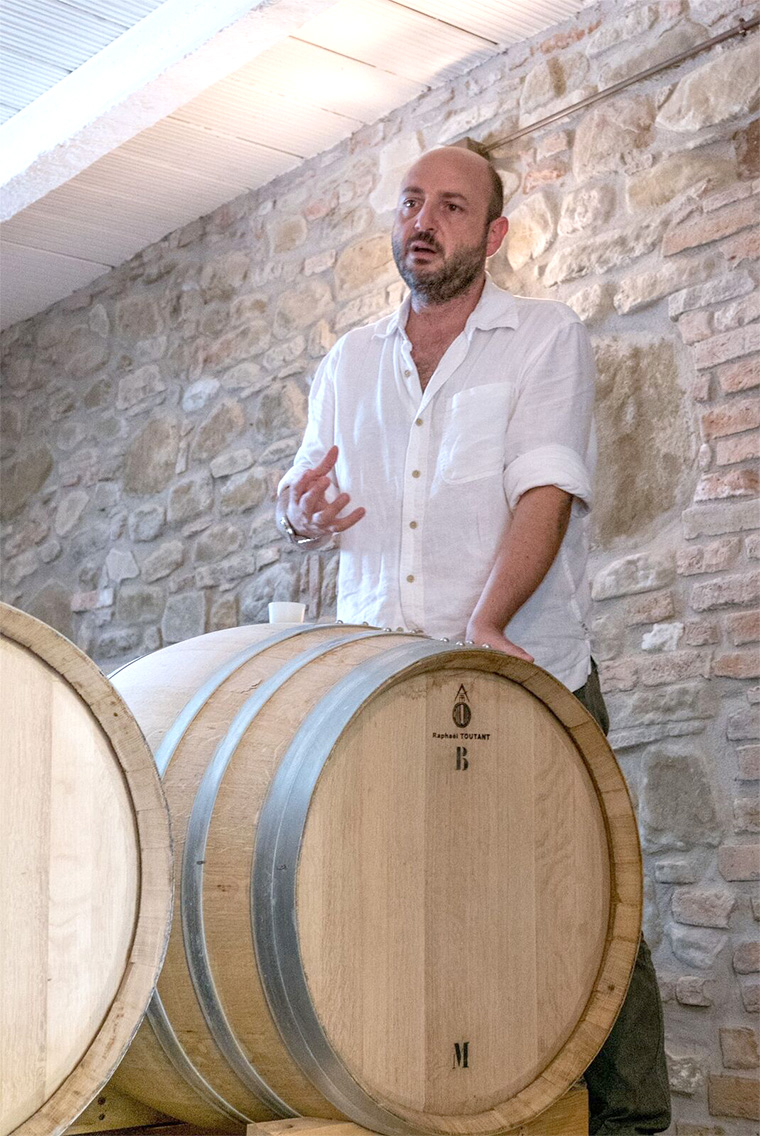
An Umbrian vintage would be a natural. Lugarotti and Antinori cellars are familiar to even the uninitiated wine drinker, but the region produces a great variety of delicious wines. For the sausages with white grapes, I might choose a bottle of 100% Grechetto such as I drank recently at Terre Margaritelli, a lovely little winery committed to native varietals, organically grown, that sits high on a hill between Assisi and Perugia. The Grechetto is a powerful white, refined and fragrant, made from the grape most associated with Umbria’s wine heritage and the local terroir. And for the sausages with black or red grapes, it would be a more formidable red—the Lungarotti or Antinori classics, or a Montefalco Sagrantino or Sangiovese such as the Caprai family does so well. Of course, you will finish off what you have left at the table with your salsicce all’uva. These wines are all distributed in the United States.
Sautéed Sweet Pork Sausages with Roasted Red Grapes
Serves 4
I have listed red grapes as an option here because they are more widely available in American markets than black grapes. If substituting white grapes, use a good white wine in place of the red. Whichever one you chose, you will have a lovely dish with very little effort.
• good olive oil
• 1-1/2 lbs. good quality sweet Italian pork sausages, in one coil or in separate links
• 3/4 cup good dry red wine
• 2 pounds seedless black or red grapes
1 A day ahead of cooking or several hours in advance, prepare the grapes. Preheat an oven to 250 degrees F. Detach the grapes from their stems and spread them out on a baking sheet lined with foil or bakers parchment. Roast them until they become dehydrated and wrinkled, 1 hour or more, shaking them occasionally to cook them evenly. They can burn easily because of their high sugar content, so be sure to keep the temperature low and keep an eye on them as they cook.
2 When you are ready to cook the sausages, preheat an oven to 375 degrees F. Select an ample seasoned cast-iron skillet or other heavy-bottomed pan. Warm a tablespoon or two of olive oil over medium to medium-low heat. You will heat it to shimmer but not smoke. Slip in the sausages. If they are in a coil, cook the coil whole without cutting it or puncturing it. If they are in links, do not puncture or cut them. Brown the sausages first on one side, then on the other to just color them nicely but without cooking them through, about 6 minutes on each side. Do not prick them or cut them. Transfer the sausages to a baking sheet and slide them onto the middle rack of the oven to continue cooking for 10 minutes.
3 In the meantime, add the wine to the pan with the sausage juices. Simmer over low heat until the alcohol evaporates, about 3 minutes. Use a wooden spoon or heat-proof rubber spatula to stir and deglaze the pan. Add the grapes and sauté them for 2-3 minutes, blending them with the wine liquid. Use a fork to squash about half of them.
4 Transfer the sausage coil or links to the skillet with the grapes. Cover the pan and warm over low heat to allow the sausages to absorb some of the pan juices for about 5 minutes. Serve at once.
Julia della Croce is a food writer and James Beard award-winning cookbook author and recipe developer based in New York. She is presently incubating a book about her family’s ancestral region, Sardegna. Visit her website, www.juliadellacroce.com and blog, http://juliadellacroce.com/forktales1/, connect on Facebook: Julia della Croce – chef & foodwriter, Twitter: @juliadellacroce and Instagram: juliadellacroce.
